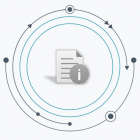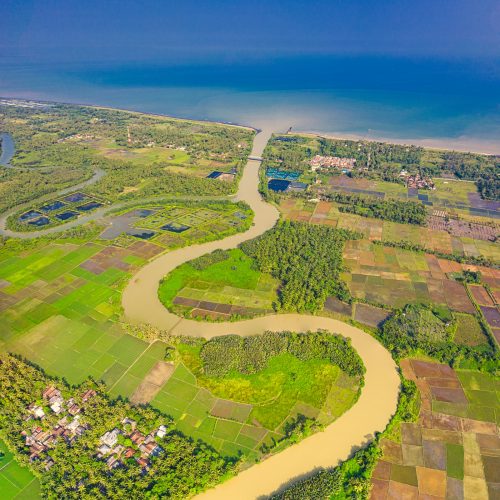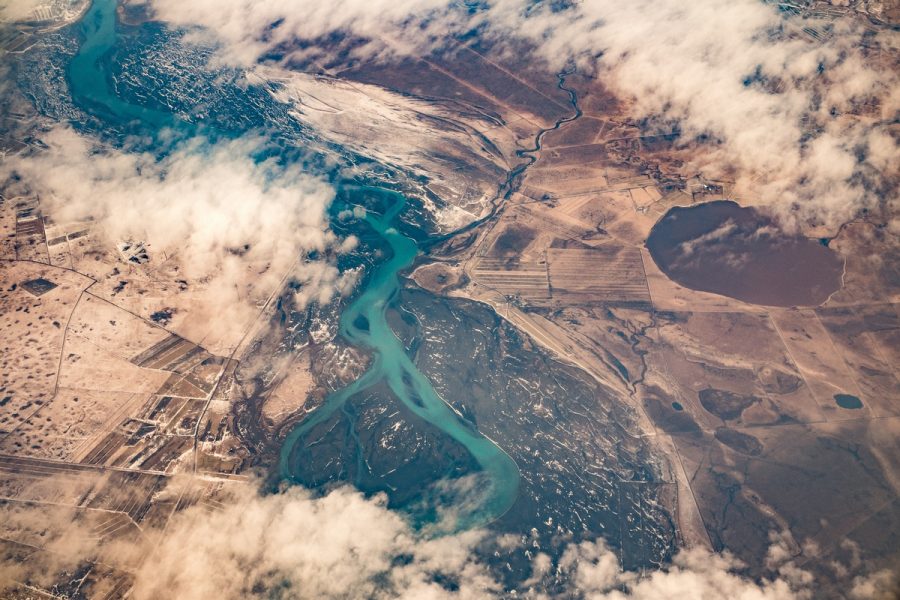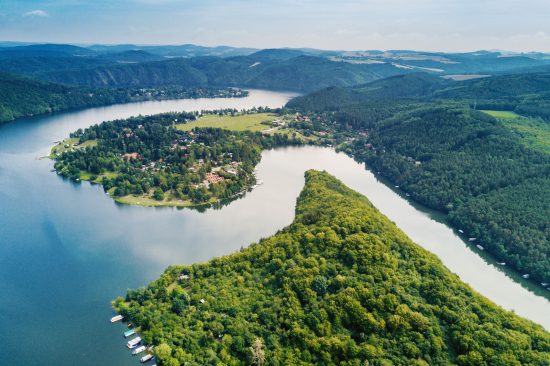PROJECT
Overview

PrimeWater is a Horizon2020 funded research project that generates information on the effects of upstream changes on future water quality and quantity. Building on advanced Earth-Observation data products, integration with additional data sources and diagnostic modelling tools, public and private sector decisions for water resources management are provided with better and actionable information.
The Challenge
Our freshwater resources are limited and face increasing pressures from climate variability, pollution, population growth, and competition from many uses. As water management operations are growing in importance and complexity, challenges regarding regulatory compliance, risk management, cost optimization and sustainability of water services foster the need and demand for application of innovative water resources management solutions.
Potential quality threats in freshwater systems are primarily related to eutrophication. Freshwater harmful algae blooms (HAB), resulting from such nutrient overload, can have a broad range of negative impacts on humans, animals and aquatic ecosystems. Many cyanobacteria can produce neurotoxic, hepatotoxic or other bioactive compounds, posing a threat if they occur in drinking water sources. For example, numerous events have prevented the use of prevalent freshwater for drinking in the US due to cyanotoxins breaching the drinking water supply. Adverse ecosystem impacts stemming from high biomass blooms of cyanobacteria and other freshwater HABs, killing fish and bottom dwelling organisms. The death hundreds of thousands of native fish in January 2019 in the Darling River in Australia were a recent reminder of these adverse impacts of deteriorated water quality on aquatic ecosystems.
For water management, adaptive planning is critical for proactively determining and mitigating water hazards since adapting to risks in a planned manner is far more efficient than reacting to a major system failure. At the same time, improved environmental performance is sought while lowering cost. In order to inform complex operational and business decisions, increased situational intelligence extending in space and time is needed. Space technology can be a catalyst to promote and support technology innovation to protect and ensure the sustainability of our water resources by sustaining an environmental information and intelligent services value chain.

Creating Solutions
Advances in Earth Observation (EO) can be a catalyst to promote and support technology innovation in Integrated Water Resources Management (IWRM), disaster resilience, and monitoring the effectiveness of implemented coping strategies.

In particular for inland waters, EO products and applications range from catchment characterization and evapotranspiration estimation to water quality characteristics of surface water bodies, such as water temperature, chlorophyll-a, total suspended matter, turbidity and dissolved organic matter. While in situ data provide point sample information for the water body status, EO can act complementary by providing surface measurements of large area coverage with a continuously increasing spatial and temporal coverage enabled by the recent developments in the availability of satellite platforms for EOs (including ESA’s Copernicus Programme). Ultimately, these data can yield new insights into the temporal and phenological changes in eutrophication and bloom events, provide early warning of the presence of harmful algal blooms, and characterise the flux and impact of sediment within the catchment.
As space-borne, airborne and in situ optical sensors become increasingly available and appropriate for aquatic ecosystem monitoring and assessment, the science-based applications will need to be further developed to an operational level. PrimeWater is aiming to build this bridge between science and practice, by translating latest innovations in actionable water information services.
Objectives
The following specific objectives of the project are related to the technologies, products and services that in combination establish a complete value chain from EO to water business sector that will be developed, demonstrated and marketed.
- PrimeWater aims to maximize the potential of the Earth Observation (EO) technologies for the water sector by enhancing and expanding the information base for inland water quality attributes, through advanced physics-based algorithms that integrate multi- and hyper-spectral imagery from satellite, airborne and ground-based sensors, increasing the situational intelligence of water regulators, emergency planners, water-related industry professionals and local communities.
- PrimeWater aspires to further add value to EO data and other Copernicus sectoral services through cross-cutting research with Data Assimilation and Machine Learning techniques aiming at improving the skill of hydro-ecological forecasts and their related impact at different spatial scales and time horizons, and hence improve preparedness against water hazards and enhance the capacity of decision-making through uncertainty information.
- PrimeWater will establish a complete value chain linking science with the water business sector, ensuring the co-development of products and services through continuous and efficient interaction and communication with water professionals across the globe and in-depth analysis of the intrinsic barriers for the wide market uptake of EO-enabled services in the water sector. As a result PrimeWater will deliver water intelligent services that capitalize on advanced EO data products and intersections with other data sources, will build on cause-effect analyses through diagnostic modelling tools, and will utilize predictive and prescriptive calculations by integrating forecasting capabilities with planning and scenario analysis.

Methodology
The adoption of EO-based systems in Integrated Water Resources Management (IWRM) requires integration of different perspectives including ecological, financial and social. These are needed to shape how information from EO systems is packaged and then used to inform real-world decision-making. Co-development is a strategy that aims to bring together various perspectives of stakeholders in the design, development and implementation of end-products. The co-development approach intensifies the co-operation between the different sectors of the water-related value chain and the developers and, thereby, determines the level of confidence in the final system.
At PrimeWater we have designed a comprehensive consultation procedure that is being deployed from the early stage of the project throughout the development phase. This approach will consolidate user requirements into the system design, followed by an industry evaluation of the end products, in order to achieve wide acceptance and uptake by different sectors – water utilities, environmental protection, emergency response, recreation, water resources management and hydropower. To facilitate co-development an international Multi-User Panel (MUP) has been set up and includes industry representatives and experts in diverse thematic areas of the water sector actively engaging them in the co-development process from the early design to the development stages.
PrimeWater aims to establish a global Community of Practice (CoP) that brings together those interested in digital water including the use of EO in water management. The CoP will include partners, experts, policy and decision makers, and end-users which are multispectral including water sector representatives but also those from other sectors (including ICT and space technology). The CoP is not just for dissemination of PrimeWater, but has a deeper aim of improving understanding of EO and its integration with other technologies in the water resources management field.
A CoP acts as a living curriculum and has the benefit of shared knowledge that can lead to more informed decision processes and higher productivity. Within PrimeWater, the CoP will intersect with existing platforms (such as the EIP Water and ICT 4Water) aligning the project with the evolution of the EU industry and services. The CoP will also leverage the IWA network especially the Digital Water Programme to allow for long term sustainability and support from IWA members, partners and beyond. It will also build on established CoPs such as GEO Aquawatch.
PrimeWater focuses on a spectrum of services, from raw data collection to more complex services and ready-to-use information for water-related decision making. The main objective of our behavioral approach is to identify types of needs and users which are more likely to be satisfied by different types of products.
The approach aims at identifying the services that could be perceived as more trustworthy and useful by use(r) type. An important objective of the behavioral approach is to contribute to the economic valuation of services from a subjective and, to the degree in which this is possible, an objective economic value point of view.
The main contribution of the behavioural analysis in PrimeWater is to map human needs on a set of different product characteristics, which can be combined into final products in a way which maximizes the overall value added and the satisfaction of users’ needs.
In recent years, Earth-observation (EO) techniques have become an operational tool to support traditional measurements providing, at a relatively low cost and for some bio-geophysical parameters, information on freshwater reservoirs and to support a variety of applications.
The retrieval of surface water properties from EO overall needs some basic processing. In particular there is the need for: correcting for the light scattered or absorbed by the atmosphere and estimating of physical and biogeochemical parameters from atmospherically corrected reflectance. These methods allow us to convert Level 1 (L1) data (i.e. top of atmosphere radiances) to Level 2 (L2) data (i.e. bottom of atmosphere reflectance). Numerous methodologies have been developed and applied to perform such processing.
Within PrimeWater, we are going to demonstrate the results of some of these processors, in particular when they are adapted to data of new hyperspectral sensors acquired in the PrimeWater target areas. Field observations will be part of this analysis since they provide reference data to validate the EO-derived products as well as might represent input data to run the algorithms.
PrimeWater introduces enhanced predictive and early warning capabilities in decision-making for reservoir management by coupling hydrological and water quality process-based models into an operational platform that generates short- and medium-term forecasts of water quantity and quality in reservoirs.
To augment its capacity to timely forecast the occurrence and extent of critical water quantity and quality events, PrimeWater investigates for efficient ways to assimilate a deluge of available data (i.e. spaceborne, airborne and ground-based data) into all links of its modeling chain. In particular, PrimeWater employs sequential and non-sequential data assimilation techniques to reduce predictive uncertainty in hydrology and surface water quality.
PrimeWater tests data assimilation techniques in an operational setting aiming to find the trade-off between performance improvement and computational requirements in real-world applications. Thereby, PrimeWater services facilitate proactive decision-making on an operational level and afford water managers time and resources for adaptive planning against abrupt shifts in water quantity and quality.
PrimeWater aspires to transform the abundance of remotely sensed and in-situ observed water quality data into actionable knowledge for supporting water reservoir management through data-driven models.
In data-driven modeling, PrimeWater goals are two-fold. First, PrimeWater aims to investigate the potential of a complementary modeling framework to improve the predictions of process-based models by integrating process-based models with add-on data-driven models. The data-driven models are trained to recover relevant information that is probably contained in systematic errors, which are inevitably present, as there will be always mechanisms that a model is unsuitable to describe. Secondly, PrimeWater aims to address the lack of a proper uncertainty quantification in water quality predictions that applies to most machine learning algorithms employed in water quality modeling. Uncertainty is a valuable component in forecast-based decision making and, in order to address the issues of uncertainty in predictions, PrimeWater utilizes probabilistic random forests and Gaussian Process regression models, which have demonstrated their strengths as modelling tools in other domains, regardless of input dimensionality, degree of nonlinearity or noise level.
Work packages

1. Project management
WP1, led by EMVIS, includes the coordination and administration of the project. Project management guarantees an efficient project design ensuring that the project’s goals and ambitions will be achieved on-time, meeting high quality standards.
2. EO Science Virtual Lab for advanced water quality products
WP2, led by CNR, is designed to develop new and robust EO-derived data sets for water quality. In particular, WP2 includes (a) revising existing algorithms for multi-spectral Landsat/Sentinel-2 data and the developments of novel methods for hyper-spectral data processing, (b) the fusion of multi- and hyper-spectral data and (c) the production of UAV-based water quality data sets.
3. Improving forecasting services through EO cross-cutting research
WP3, led by SMHI, involves a set of collaborative scientific experiments that leverage EO-derived data sets developed in WP2 for improved ecological and hydrological forecasting.
In ecological modelling WP3 aims to benchmark candidate Data Assimilation algorithms to integrate EO-based, airborne -based and in situ observations in ecological modelling and investigate the performance gain at the pilot studies. In hydrology WP3 will provide a new perspective for improving forecast quality at seasonal time scales through assimilation of in-situ and EO data.
WP3 will also formulate data-driven algorithms for (a) reducing predictive errors in process-based models and (b) forecasting HAB-related water quality parameters.
4. Operationalizing EO cross-cutting services for predictive management of hydro-ecological hazards
WP4 is led by EMVIS and involves the development of a web-based platform for short-medium range water quantity and quality forecasts as well as seasonal hydrological forecasts.
The objectives of WP4 are to define the system architecture and develop the back-end IT infrastructure that will host the different EO and modelling sub-components developed in WP2 and WP3 so as to establish a fully operational service line at the three case studies. WP4 will employ agile participatory processes to incorporate end-user needs in downstream services development.
5. Service Validation & transferability in demonstration areas
WP5 will demonstrate the transferability and applicability of the service line in the demonstration areas. Apart from service and results validation WP5 will also attempt to bridge the gap between developers and users of EO-based services by improving the understanding of social and institutional determinants of the decision-making process of EO-based services users. WP5 will also draft a detailed business model to explore new market potential and profitability inside and outside Europe.
6. Dissemination and exploitation activities
WP6 is led by IWA and involves the communication and dissemination of the project’s outputs by implementing an efficient strategy to increase awareness and understanding of the project goals and objectives. In order to promote the uptake of the technology by the water sector, WP6 will cultivate a Community of Practice that will facilitate knowledge exchange and support the exploitation and marketing approach of project outcomes and results.
